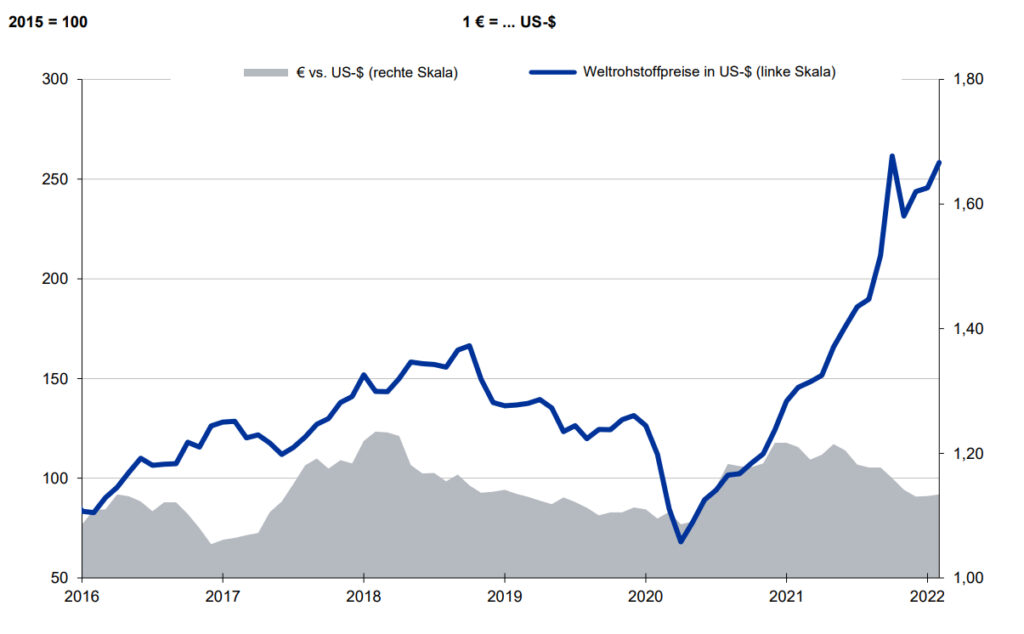Material efficiency is the ratio of the quantity of finished products to the quantity of input materials procured and processed. The less material is wasted or lost within the value chain, the higher the material efficiency. Greater material efficiency also reduces the carbon footprint.
Material efficiency more important than ever in times of raw material shortages
Not so long ago, many companies were not even aware of the term “material efficiency”. Material-efficient production has now become a key competitive factor for many companies. The fact that numerous countries – above all Russia and China – are trying to gain exclusive access to valuable raw materials and restrict foreign companies’ access to their raw material sources has become clear once again as a result of the energy crisis. Material efficiency is also important when it comes to reducing CO2-footprint of a company, because more efficient use of materials also results in lower CO2-emissions.
Material is an increasing cost factor
In normal times, material costs account for around 45% of total costs in an average production company. Due to the bottlenecks and therefore price increases on the procurement markets, the current percentage is likely to be significantly higher for many companies. Since the start of the coronavirus pandemic, global commodity prices have risen almost continuously, as figures from the Hanseatic World Economic Institute and the German Bundesbank show, and the Russian invasion of Ukraine has driven commodity prices even higher.
Development of world commodity prices (Source: HWWI; Bundesbank, quoted from
IKB Information Commodity Prices
04.03.2022)
Total costs are therefore growing significantly faster than the productivity of many companies. These highlights show that increasing material efficiency should be part of the mandatory program of most production companies.
What can supply chain management contribute to improving material efficiency?
Measures to improve material efficiency are generally equated with technical improvements to the product. The focus is then on measures to change production processes or reduce waste, as well as design measures. This is also where the decisive levers for increasing material efficiency lie.
However, there is also potential in the planning and management of supply chains and in the correct logistical design of the product portfolio: the annual inventory-related material efficiency losses that can be attributed to these causes are between 5.5% and 9% of the stock value or stock quantity! Savings that are achieved here have a direct and equal effect on reducing CO2-footprint of a company.
Forecasts and scheduling processes ultimately also have an impact on the carbon footprint
Let’s look at the causes in detail: First of all, there is the internal and external diversity of variants. The more alternative products and product variants there are on the market, the greater the risk that finished products or associated semi-finished products and raw materials will have to be scrapped because there is no longer a market need for them. The more different the assemblies and individual parts for a product are, the greater the risk of having more than necessary in stock.
The worse and more imprecise the demand forecasts are and the more they reflect the wishes of the company rather than the needs of the market, the higher the inventories generally turn out to be. Pre-production in excess of demand in turn leads to unnecessary stocks.
Unsuitable scheduling procedures and strategies and incorrect, unmaintained master data lead to poor scheduling and thus to insufficient delivery readiness or excessive inventories.
Fewer shortfalls mean a smaller carbon footprint
Poor readiness to deliver may result in partial deliveries, subsequent deliveries and special trips and thus additional CO2-emissions.
As the amount of stock increases, so does the amount of material that cannot be used and is later scrapped without the material used and the value added invested being converted into revenue. This wasted material unnecessarily generates CO2 and its disposal will require further CO2 emissions.
Three of the most important levers, as our now extensive experience with projects to increase material efficiency shows, are the architecture of the value chain, the correct tailoring of the product portfolio and demand-oriented planning. These levers make a massive contribution to minimizing the risk of rejects due to missing requirements or planning errors. In individual cases, we were able to reduce material waste by up to 29%, which also reduced CO2 emissions by the same percentage.

